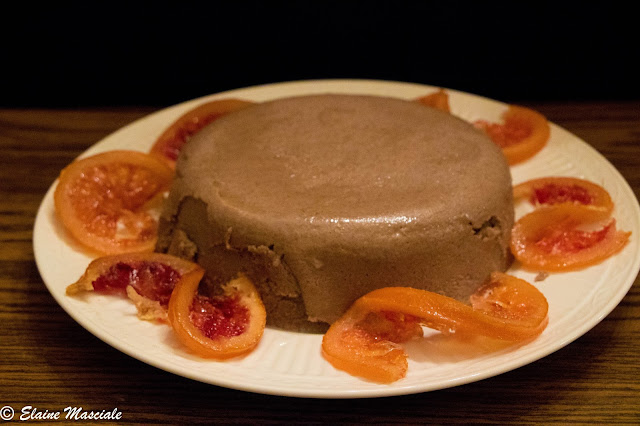A Mid-Nineteenth Century Lady's Nightcap
I decided I needed a lady's nightcap. Not a fancy ornamental day cap, but a practical one that could stand washing, ironing, and wearing. My criteria were that it be historically accurate, that it would cover my ears and keep me warm, and that it not twist around or fall off while I was sleeping. I sleep cold; when we camp out at a reenactment, I will wear a knit cap to sleep during the cold weather. At the end of March we are going to participate in an immersion event, which is where everything must be as accurate as possible at all times, 24/7 (or in this case, 24/3). We will be staying in an antique log cabin, so there is no heating other than the fireplace. It's been a cold, windy winter with an over abundance of snow, so I wanted to make sure I stayed warm at night.
In July 1859, Peterson's Magazine (akin to Good Housekeeping or Better Homes and Gardens) published a pattern for a lady's nightcap.
A number of reenactors have made it up and there is a good amount of discussion about the size: should it be larger? How much larger? I decided to follow the pattern as given with a minor modification. I am tall and have a large head and I know I normally have to add a bit more to depth and length to bonnets. I wanted to add a bit to the length of the front brim so that it would cover my ears when finished. First I needed to know how a nightcap fit. Could it come that far down or was it something shorter? I have not yet seen a period photograph of a woman wearing a nightcap. I did find this illustration of a woman wearing a crocheted nightcap from Godey's Lady's Book in 1852.
In July 1859, Peterson's Magazine (akin to Good Housekeeping or Better Homes and Gardens) published a pattern for a lady's nightcap.
A number of reenactors have made it up and there is a good amount of discussion about the size: should it be larger? How much larger? I decided to follow the pattern as given with a minor modification. I am tall and have a large head and I know I normally have to add a bit more to depth and length to bonnets. I wanted to add a bit to the length of the front brim so that it would cover my ears when finished. First I needed to know how a nightcap fit. Could it come that far down or was it something shorter? I have not yet seen a period photograph of a woman wearing a nightcap. I did find this illustration of a woman wearing a crocheted nightcap from Godey's Lady's Book in 1852.
This gave me the idea that a nightcap may not come all the way down to one's forehead. I would not want to widen my pattern past my ear line. This cap also comes down past the ears, so I would be justified in making mine that long.
Now it was time to look at some original nightcaps. When one looks at originals, it can be difficult to determine the difference between a nightcap and a day cap of a slightly earlier decade. I decided to eliminate originals with lappets (long fancy ties), which were worn untied, draping down the shoulders because a nightcap needed to be tied securely so it would not slip off. I also eliminated those of very delicate construction with elaborate embroidery. Nightcaps certainly could be embroidered and would have come in a range from strictly practical to fanciful.
This is a pattern for an embroidered nightcap from The Young Lady's Book of 1859. The embroidery comes in the section on whitework, so it would have been embroidered in white upon white. I knew I did not have time to embroider a nightcap by the end of the month, so I focused on plain ones.
Peterson's includes this illustration with the pattern to show how it should be made up. The sketch leaves a lot of opportunity for interpretation.
This cap is of a dotted Swiss, some lace inserts, and a narrow border of lace (http://www.victorianrecreation.co.uk/costumes/html_8/8410363985.html)
This is made from a windowpane check with a lace border. It has some small tucks in the front brim. While I liked both of those nightcaps very much, I didn't have either fabric in my stash. Time is one of my main constraints.
I decided to use this last image - plain cotton with a self-fabric ruffle. This has a small insert which the Peterson's pattern does not have. All of the extant caps I found in on-line collections seem to be constructed of one layer with the lace or ruffle finishing the edge. Since I wanted this nightcap to help keep me warm, I decided to make it double layered.
Ultimately, I enlarged the brim to come down over my ears and made it about a half inch wider. I made a needle-rolled ruffle of the same white cotton but did not extend it around the bottom. I may go back and continue the ruffle after I add the pull tie to gather it at the neck. My ties are finished at 1" wide. I chose self-fabric to make it more washable and because a ribbon is more slippery.
Here is my finished nightcap!










I love your new nightcap, and thanks for all the great information. I've been pouring through Godey's and Peterson's looking at caps, nightcaps, bonnets, and hoods - this is the year of millinery for me.
ReplyDeleteThanks! I'm really very happy with it - I even tested it out by sleeping in it at home.
Delete